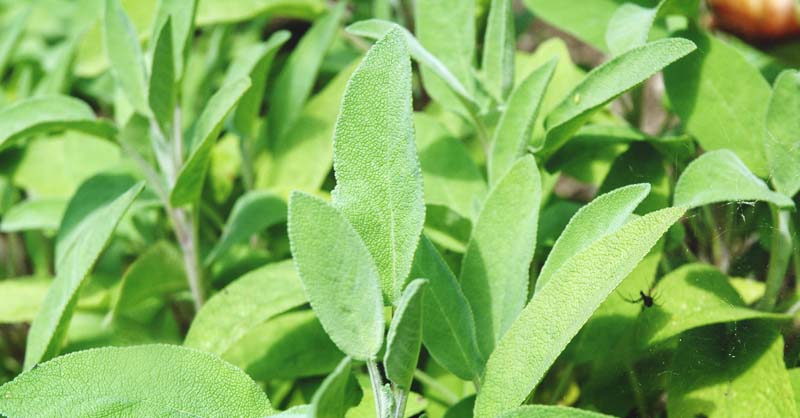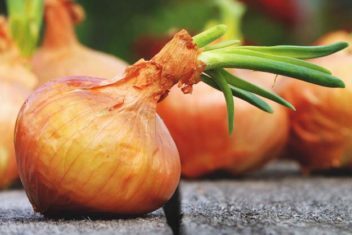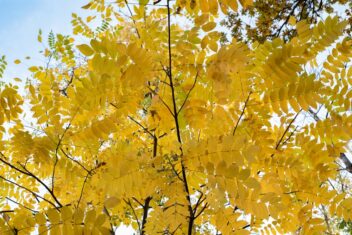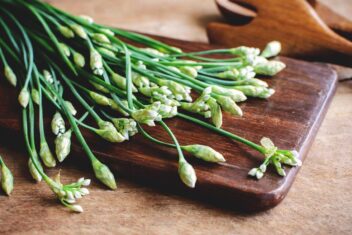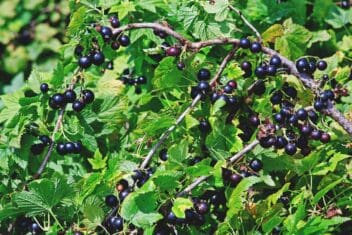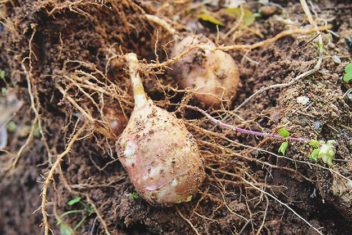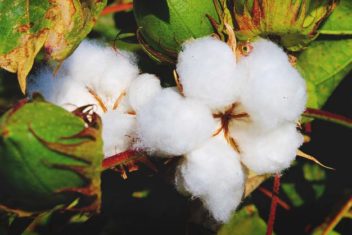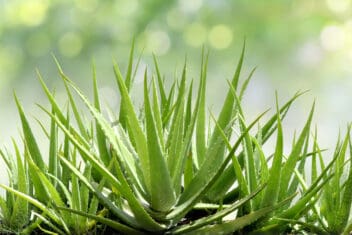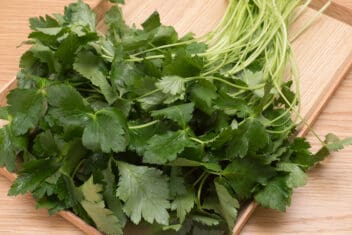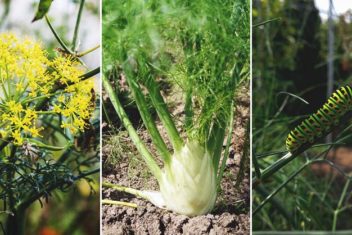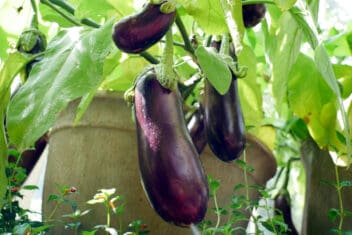On any given year, you’ll find me growing sage all over my property because it’s one of my favorite herbs. It’s indispensable in cooking, but there’s much more to this wonderful plant than just dinner.
Sage has antiseptic properties and can be used to treat cuts, sores, and ulcers. It aids the digestion of fats, and there’s evidence that it can be a tonic for rheumatic pain and anemia.
In ancient times, sage was used for coughs and sore throats. Today, you can make fresh sage tea by steeping the leaves, add a bit of honey and you have a tasty and therapeutic brew.
If you live in a dry area, it’s an ideal herb garden option because it doesn’t require a ton of water. Once established, it’s relatively fuss-free.
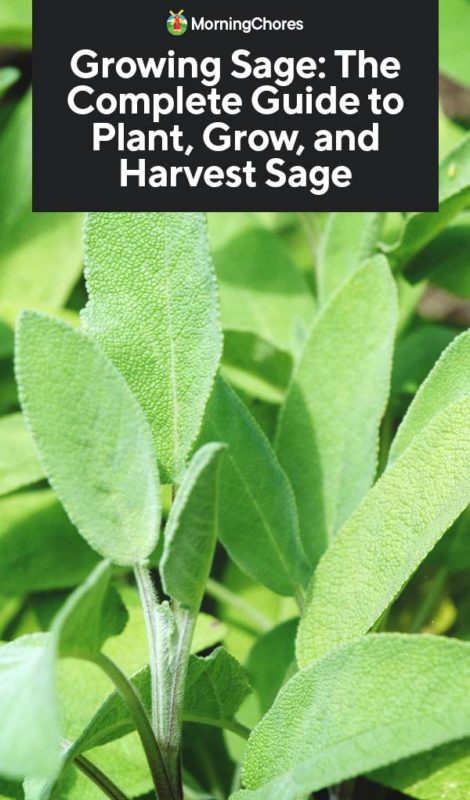
Sage Varieties
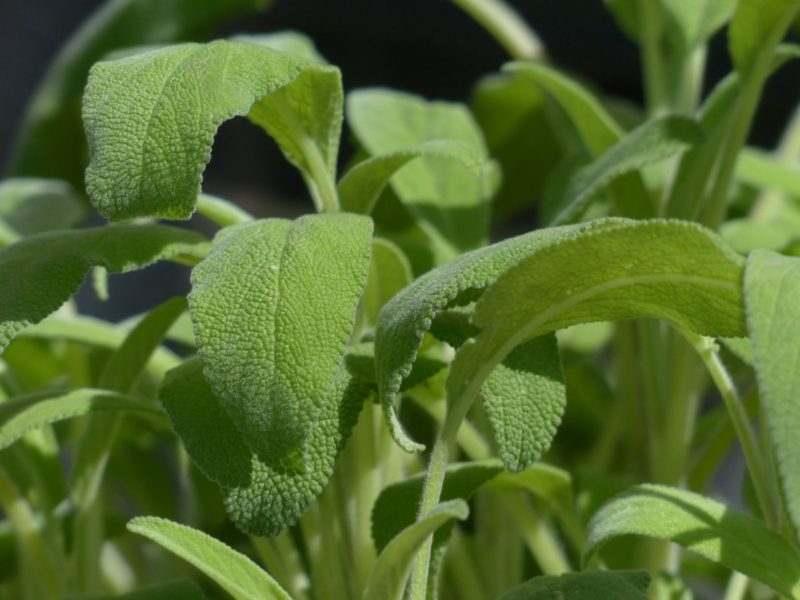
Green Garden Sage
Green garden sage is the most popular in cooking. The leaves have an intense flavor and, when dried, it can be even more potent. It’s good in an ornamental garden as well as your herb garden.
Pineapple Sage
This sage has a beautiful pineapple aroma, and every time I walk past it I can’t resist crushing a leaf and smelling the pineapple scent. I can taste the pineapple in dishes when we use this variety. It grows quite a bit bigger than green sage, so you need to take that into account. Bees also love pineapple sage.
Purple Sage
Similar to green sage, only this variety is purple. It’s great as a garnish or as an ornamental addition to a garden. Like many sages, it’s drought tolerant once it becomes established.
Tri-color Sage
Tri-color sage is a smaller variety that looks as good in an ornamental garden as your herb garden. The leaves are green, white and pink or purple with pretty violet flowers. This type lends itself nicely to container growing.
Golden Sage
This variety has light green leaves with a pretty golden border. Golden sage doesn’t handle drought as well as other types, particularly in extreme heat.
Aurea
Aurea is another small variety that’s ideal in pots. The leaves are yellow, and it has lovely little purple flowers that my bees always visit. Unlike other varieties, this type isn’t cold hardy, so give it some winter protection in colder areas.
Berggarten
Berggarten is the ideal sage for people who love to cook thanks to its pungent flavor. The oval leaves turn vaguely purple in full sun, and the compact growth habit makes it perfect for containers or small areas.
How to Grow Sage
Zones
Sage grows well in zones 5-9. Common green sage is hardier than other varieties, so try growing it before any others if you don’t have an ideal climate.
Sun and Soil Requirements
Sage does well in full sun. Some varieties can handle a bit of shade.
Sage needs well-draining, loose soil that has plenty of nitrogen. pH should be between 6.5 and 7.0, though it’s a forgiving plant.
When to Plant Sage
Direct sow sage about two weeks before the last frost when the soil is between 60 and 70°F.
You can also start seeds indoors 4-6 weeks before the last frost. Sow seeds in small pots of rich seed mix.
Starting Sage
Plant 8-10 seeds per 6-inch pot and cover lightly with soil. Keep soil moist. Thin out seedlings so that you have one sturdy plant per pot.
Transfer when the seedlings are several inches tall. Be sure to give plants about a week to harden off.
Sage can also be grown from softwood cutting. That’s the way I grow sage. I’ve always found the seeds can be a bit hit and miss.
Fertilize your garden well before planting your sage. I use well-rotted manure and general fertilizer. I let the soil rest for a week before planting.
Where to Plant Sage
Sage is a perennial that grows to about 20 inches, so plan for its size. Sage grows well in pots and you can move them around to catch the sun.
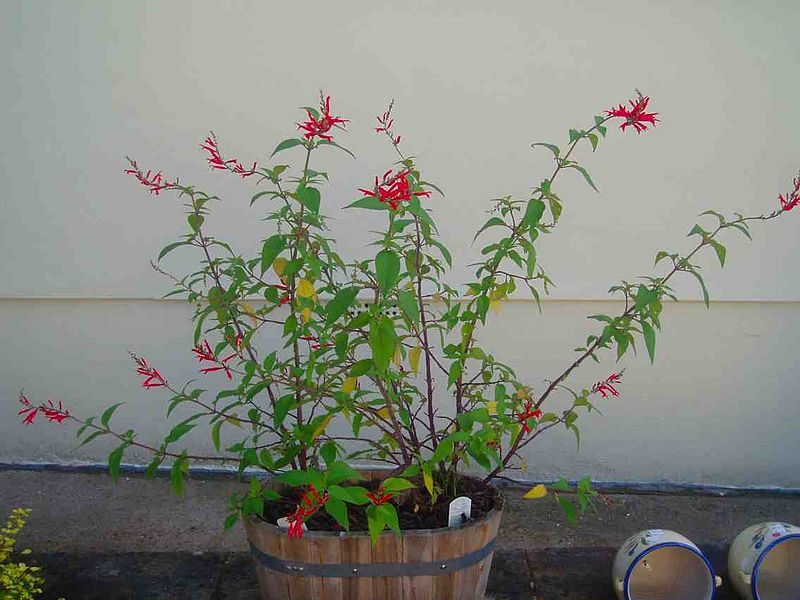
Spacing
Give sage plants 18-24 inches between plants. Plant seeds 1/8-1/4 inch deep.
Caring for Sage
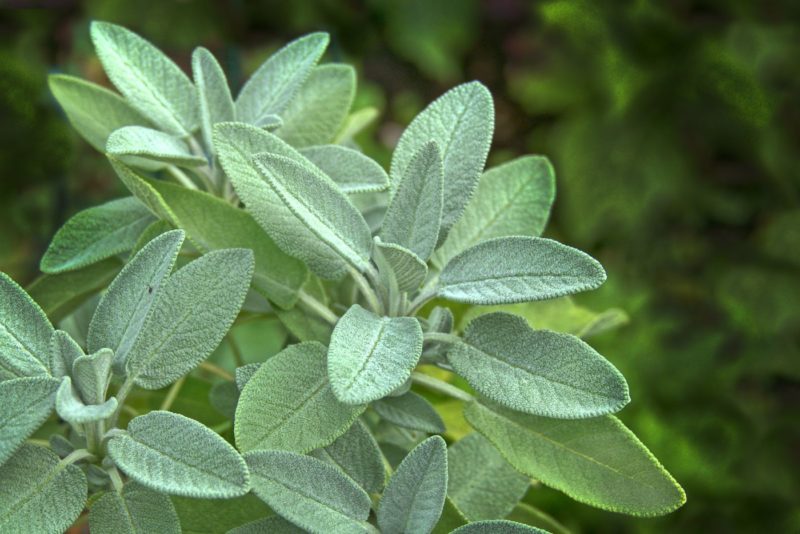
Fertilizer
Side dress growing sage with high-nitrogen fertilizer about 6-8 weeks after you put plants in the ground.
Watering
Sage hates wet feet so don’t over water. The plant will tolerate dry conditions, so water deeply once a week or so, allowing the soil around the plant to dry out between irrigation.
Pruning
Prune sage bushes lightly in summer after flowering. The stems can be woody, so thin them to encourage new growth.
Common Problems and Solutions for Growing Sage
Rust
Rust is a fungal disease that reduces plant vigor, and if it gets terrible, the plant can die. Initially, the leaves may have light colored spots before turning larger and darker in color. Basically, it looks like the plant is rusting.
The best way to control rust is prevention. Ensure there’s plenty of space between plants and water the soil around the base, not the leaves. In minor cases, pick the leaves that are infected and either burn or seal them in rubbish bags.
Powdery Mildew
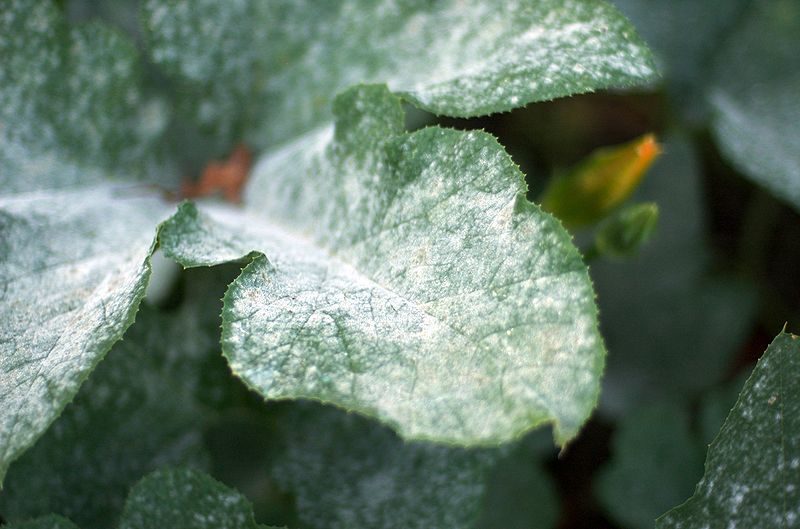
Powdery mildew is another fungal disease that spreads to other plants quickly and is common in humid areas. Remove any infected plants and burn or throw away. Don’t compost any plant material that has a fungal disease.
I find that neem oil works well to control powdery mildew, but you can also use other organic fungicides.
Crown gall
Crown gall is a bacteria that infects growing sage. As the name implies, it causes galls to form on the crown of the plant. You can’t control it, so do your best to prevent it by sanitizing your tools and solarizing your soil. You can also use a strain of Agrobacterium tumefaciens as a preventative biological control.
Leaf spot
Leaf spot can be caused by bacteria or fungus. Plants will exhibit brown or black water-soaked spots that can eventually cause leaves to turn yellow or wilt. Give plants plenty of air circulation by planting them with the recommended space, keep weeds out of your garden, and disinfect your tools between use. You can also spray plants with a mix of vegetable oil, baking soda, and water.
Root rot
If your sage has stunted growth, dig down and check out the roots. Soft, brown roots mean you have root rot. If the disease has impacted the entire root system, it’s time to pull up and destroy the plant. If the plant seems salvageable, trim off any of the mushy roots and replant.
Avoid root rot by not watering too much, providing the right soil mixture, planting in full sun and giving plants plenty of space.
Verticillium wilt
Vert is a fungus that causes leaves to wilt, curl, discolor and die back. It attacks plants through the roots and can’t be cured once it has infected your plants. The best way to avoid it is to make sure that your sage is healthy. Fertilize, water and prune your plant regularly. If you do get a vert infestation, pull your plants and solarize your soil.
Whiteflies
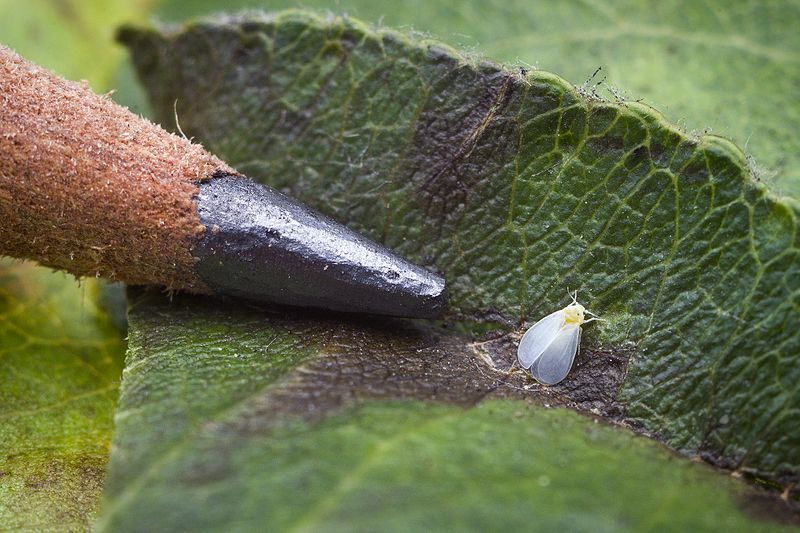
Whiteflies are similar to aphids. If you shake your plants and lots of little white flying insects swarm around, you likely have whitefly. They cluster on the underside of leaves.
They suck on the juices of plants and leave a residue known as honeydew – another issue that can spread disease. Eventually, the plant will wilt and die or at least lose all vigor. Use insecticidal soap or neem oil to get rid of them.
Aphids
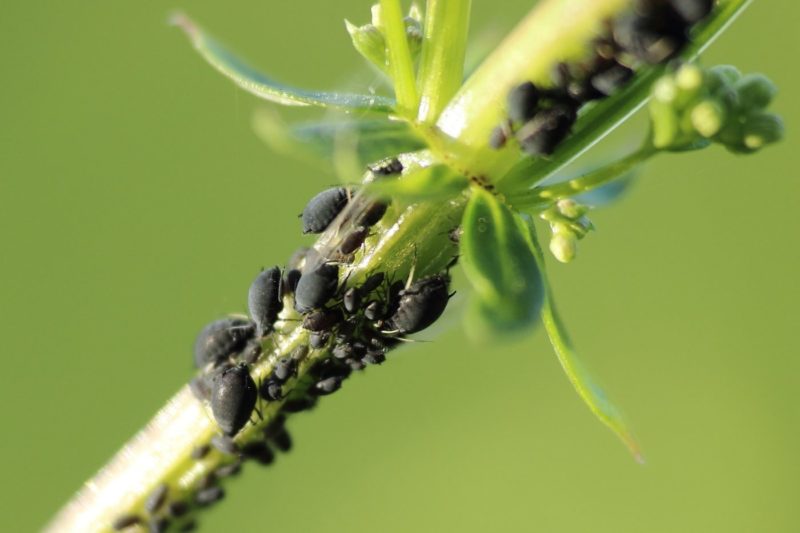
Aphids are another sap-sucking pest that affects the plant’s ability to flourish. Use neem oil or other organic insecticide to control them. Pinch off leaves that are heavily infested and seal in a bag before putting in the garbage.
Slugs and Snails
Snails and slugs love to snack on growing sage plants. Hand pick any that you see, and place oyster shells or copper strips around plants. You can also use cups of beer or yeast and sugar water to catch them. If you still struggle with slugs and snails, break out the pet and child-safe bait.
Spider Mites
Spider mites cluster on plants and literally suck the life out of your sage. You’ll often first spot them thanks to the fine webbing all over the leaves of your sage. Spray them off of your plant with a blast of water and then treat with neem oil.
Companion Plants for Sage
Plant sage with:
- Rosemary
- Cabbage
- Carrots
- Celery
- Broccoli
- Cauliflower
- Brussel sprouts
- Marjoram
- Tomato
- Beans
- Strawberry
My best performing sage is planted next to a lemon tree. Its leaves are huge and it has remained pest free for its lifespan so far.
I’ve also planted sage in with tomatoes, beans, and strawberries. The only time my sage failed was when I planted it in an area with too much shade.
Don’t plant with cucumber, rue, or onions.
How to Harvest and Use Sage

Gather the leaves regularly and collect foliage for drying before the plant has flowered. Harvest sparingly in the first year. Fresh leaves are milder than dried. They can be stored in the refrigerator in a plastic bag.
Cut sprigs of sage in the spring for drying. Use a dehydrator or hang in a warm dry area of the house.
Sage is versatile in the kitchen. In Italy, it’s used to flavor barbequed meat. It goes well with pork, chicken and oily fish. You can use it in stuffing and sauces. I steep it in hot water and honey for a healthy soothing tea.
If you haven’t grown sage yet, give it a go. It’s easy to care for and it benefits from constant picking. It will give your recipes a lift too.

